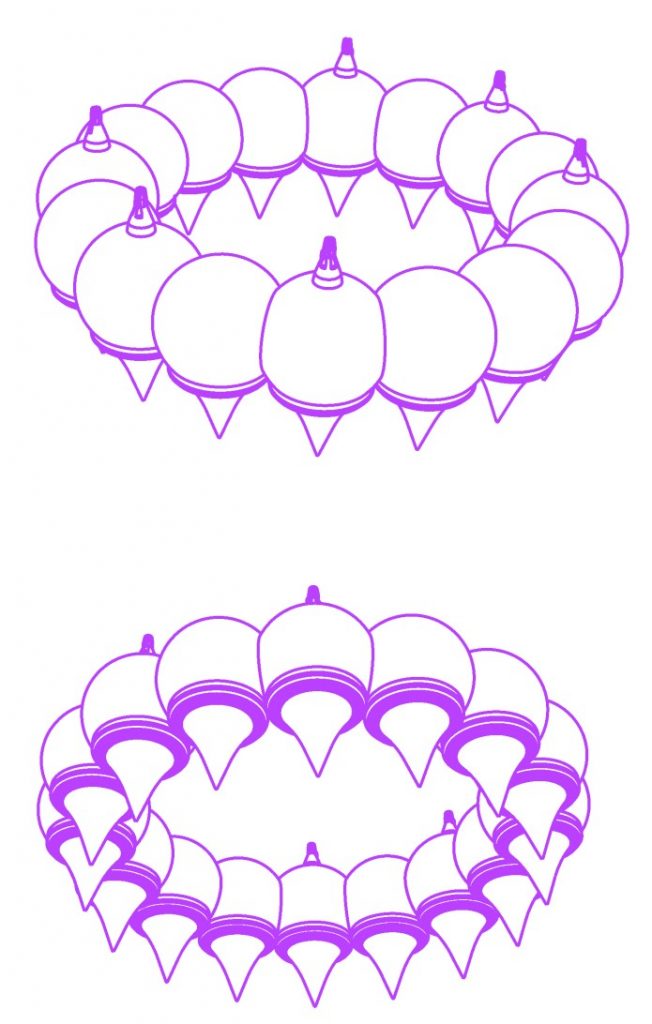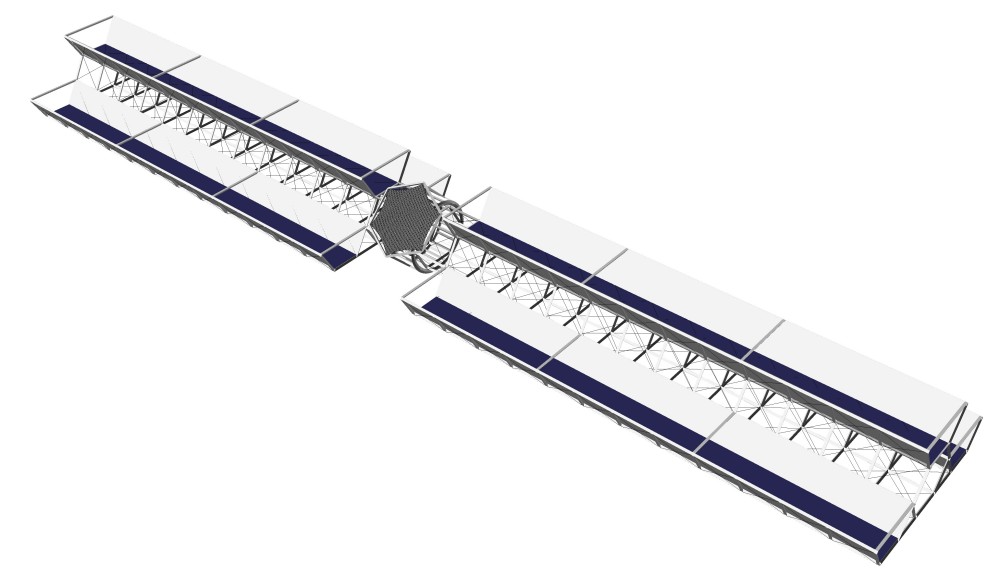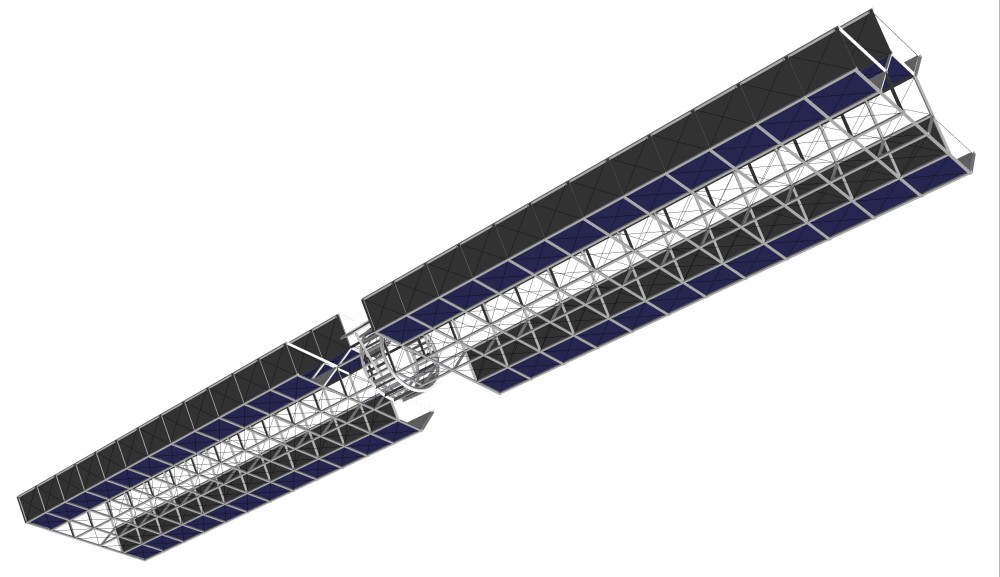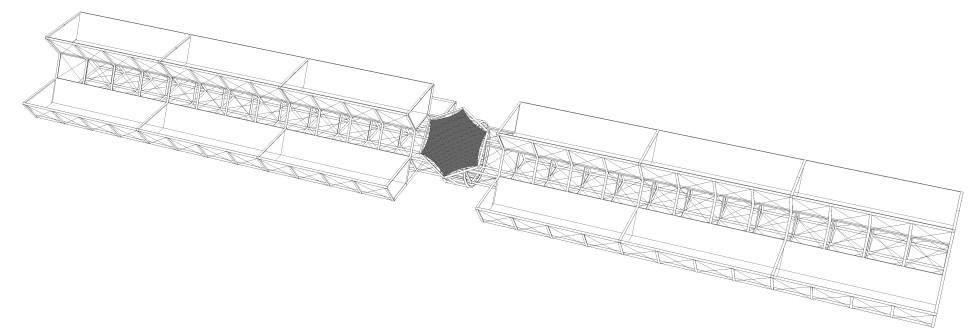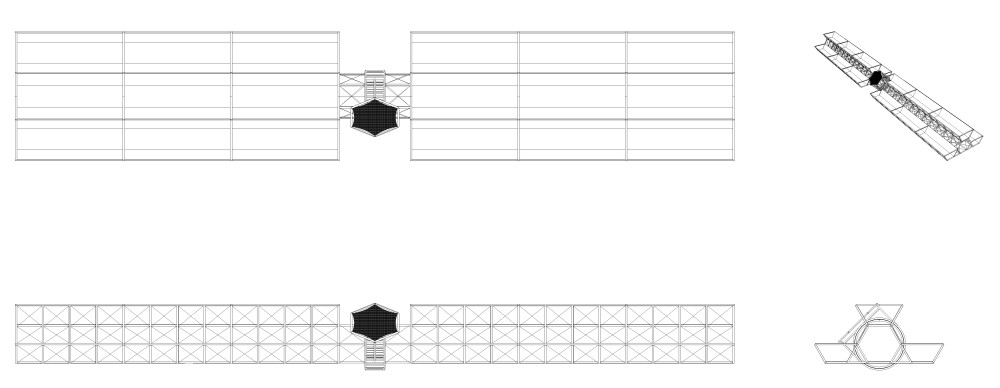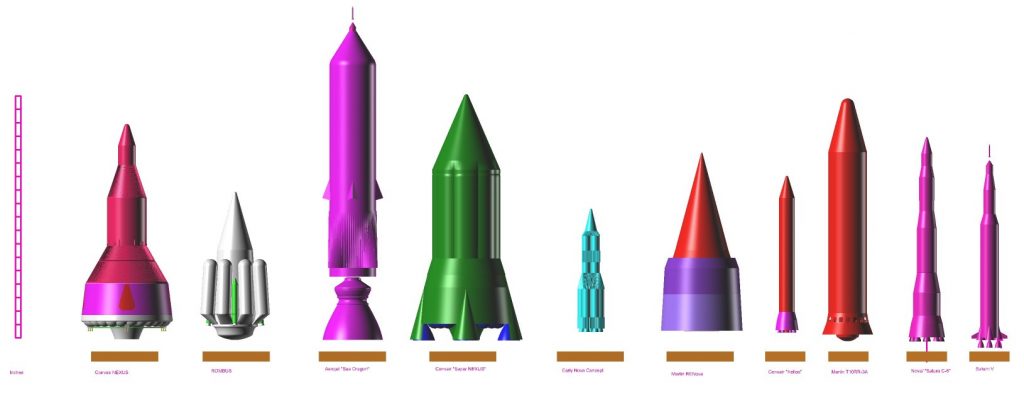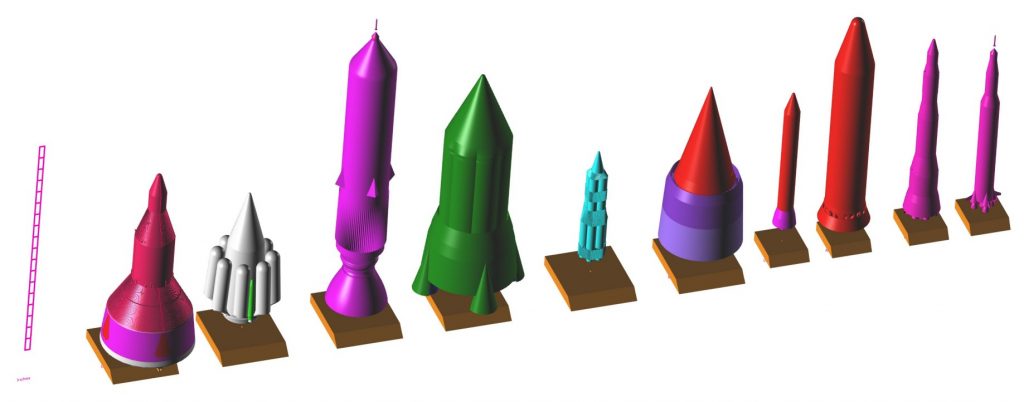Another early look at US Spacecraft Projects #6, this time showing one of the more unusual space vehicles ever seriously contemplated… a single stage to orbit space station. This one would seem to be especially vulnerable to thrust imbalance, but at least it had enough engines (11,520) so that if one went out, the lack of thrust wouldn’t be *too* hard to counter.
The San Diego Air and Space Museums Flickr account recently added this illustration, showing a Convair “Big Stick” being launched off the back of mobile transporter. “Big Stick” was a Convair concept for a nuclear ramjet powered cruise missile of nearly unlimited range, a less-known competing design against Voughts Pluto vehicle.

A higher rez (though, sadly, not a whole lot higher) version is available HERE.
If you are interested in Big Stick and Project Pluto, I recommend Aerospace Projects Review issue V2N1, which covers both in detail.
Discussions with Fantastic Plastic about model sets of large boosters is starting to focus on the Nova/Post Saturn collection for the initial release. Scale is likely to be 1/700 ( the smaller boosters aren’t *too* small, the bigger boosters are impressive and it will go with any of a number of existing ship model kits), and the current lineup is shown below.
Picking which designs to include and which to exclude is a bit of trick with the Nova/Post-Saturn line, as there were literally *hundreds* of designs worthy of consideration. If anyone has a suggestion for some other design you’re dying to see, let me know. The “inches” scale bar here is for the models at 1/288 scale… which this model set assuredly *won’t* be. Fantastic Plastic has previously released a 1/288 ROMBUS and a 1/288 NEXUS and *may* release 1/288 scale models of some of the others as individual kits… but the Sea Dragon and the Super-NEXUS would be *huge.* Once the collection is finalized a single display base will be sketched out.
Lockheed’s entry into the FAA’s 1960’s Supersonic Transport contest was the L-2000. It was an appealing design, sort of a super-sized and angular Concorde. it lost to the Boeing 2707 due in no small part to the 2707’s swing wings… wings which wound up being fixed, like those of the L-2000.
In 1965 Lockheed released an exploded view of the L-2000’s structure, reproduced in Aviation Week, split across two pages. I took the images and fixed them; the full-size end result is pretty spiffy. I have uploaded the illustration, and two additional L-2000 images to the 2019-02 APR Extras Dropbox folder, available to $4 and up subscribers to the APR Monthly Historical Documents Program.
The Vought Hypervelocity Missile program began in the 1980’s as an effort to create a relatively low-cost anti-armor missile. Instead of a massive warhead, the HVM would use kinetic energy to simply punch a hole through the armor of Soviet tanks. it would do this by accelerating to in excess of Mach 4. The HVM program continued on in several modified forms into the 21st century, but eventually did not result in production.
A recent pile of stuff purchased on eBay included two Vought prints of the HVM, one showing either a test round or a mockup, the other an artists concept showing an armored vehicle with a large turret for the storage and launch of HVMs, in the process of ruining the day of the crews of two Soviet T-72s. Sadly the prints have seen better days, having gotten a bit crumpled over the years, but they’re better than nothing. I have scanned them in full color/300 DPI and uploaded the scans to the 2019-02 APR Extras folder on Dropbox, available to all APR Patrons and Monthly Historical Documents subscribers at the $4 level or higher.
On the 29th, APR Patrons and Monthly Historical Documents program subscribers were sent emails containing links to the January, 2019 rewards. This months set of documents and diagrams included high-rez copies of:
Document: “ASTRO A Manned Reusable Spacecraft Concept,” a Douglas Missiles & Space brochure from August, 1962, describing a two-stage Shuttle-like vehicle
Document: “Status update Ramjet Propulsion 1978” a brochure from the Marquardt Company
Document: “Rocket Blitz Form the Moon” an article from the October 23, 1948 issue of “Colliers” magazine describing the use of the Moon as a missile base, with some helpful Bonestell illustrations of Manhattan getting nuked.
Diagram: A large format color scan of the 1970 North American Rockwell PD-157-17-2 HIPAAS V/STOL jet fighter
CAD Diagram: isometric view, Bernal Sphere space habitat
If this sort of thing is of interest and you’d like to get in on it and make sure you don’t miss any of the forthcoming releases, sign up either for the APR Patreon or the APR Monthly Historical Documents Program.
The Internet Archive has a *lot* of stuff. One thing there is a scan of the French-language aeronautical magazine “L’Aeronautique” covering 1919-1921. It is available in a number of formats, including PDF, here:
https://archive.org/details/la02b9eronautiqu03pari/page/n2
Included in this is a design for a truly gigantic aircraft with a wingspan of 110 meters, produced by Professor Junkers, presumably Hugo Junkers of Junkers Flugzeug- und Motorenwerke AG.Hugo was an innovator in the field of all-metal aircraft construction, including the first practical all-metal aircraft the Junkers J 1 from 1915. The giant aircraft would have a wing area of 1,400 square meters and a gross weight of 60 tonnes; 12 engines would produce 4,000 horsepower and drive six propellers. Two tractor props would have a diameter of 6 meters, while four pusher props would have a diameter of 3.7 meters. No performance data seems to be given, but it can be assumed that it was meant to be a long range passenger or cargo transport.
Support the APR Patreon to help bring more of this sort of thing to light! Alternatively, you can support through the APR Monthly Historical Documents Program.
Bonus: A helicopter design from one Douglas Shaw. This would have failed entertainingly.
A magazine ad from 1966 depicting a lifting body in space. The design seems reasonable 9sort of a cross between the M2and the HL-10) but could very well be a product not of engineers but of the art department. The angle is not the most informative, but it appears that this design has something of a squared-off nose. Note that the cockpit canopy is exposed, something that very few small lifting body designs had… for the simple reason that the windows would likely melt during re-entry, and that would defeat the purpose in making the thing recoverable. As vehicles get bigger, such as the space shuttle, the windows get further away from the nose and can be made survivable. But little designs like this? not very likely with 1960’s tech. Otherwise, though, it is an attractive illustration.
